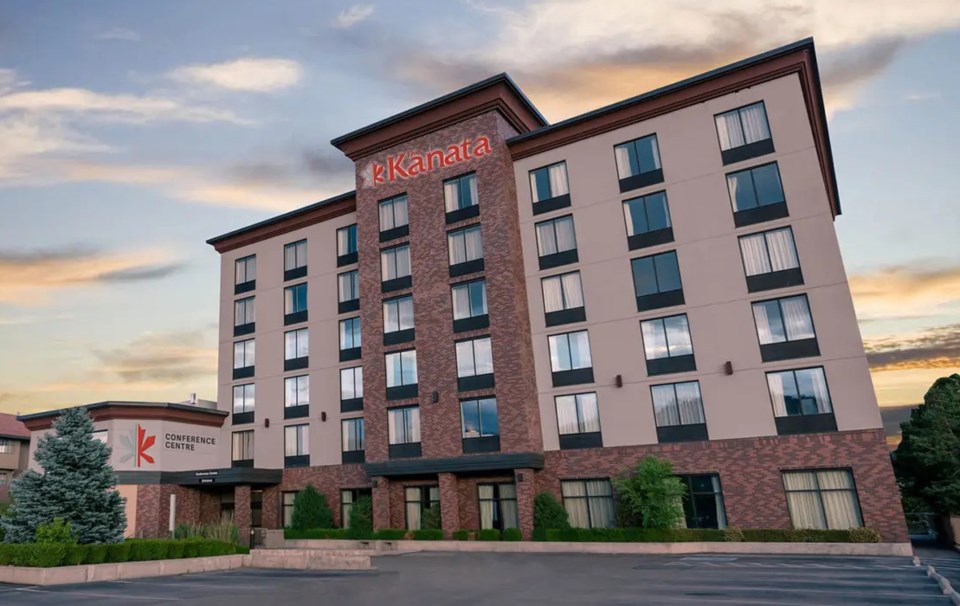A wildly successful tourism season has Western Canadian hoteliers looking to build on the lessons of the past three years as a recession looms.
Occupancies rose 60 per cent nationally in the nine months ended September versus a year ago, pushing average daily room rates to $183.76, or 34 per cent above last year. This boosted revenue per available room (RevPAR) to $110.11, up 113 per cent versus a year ago.
“It’s been a remarkable recovery, and for us it’s been right across the country,” said Brian Leon, CEO of Choice Hotels Canada, speaking at the Western Canada Lodging Conference in Vancouver on October 25. “We’re going to end this year with RevPAR probably a little more than 10 per cent higher than it was in 2019. We would never have expected that.”
Vancouver led the country, with an average occupancy rate of 70.3 per cent in the period. Room rates followed suit, rising 49 per cent to a nation-leading $243.72 a night. RevPAR increased a stunning 153 per cent to $171.34 from just $67.69 a year earlier despite ongoing border closures.
“This market has really seen great recovery over the past year,” said Jim Chu, executive vice-president and chief growth officer of Hyatt Hotels Corp. “And that’s without China.”
The strength of demand in Vancouver stands out next to Calgary, where hotel performance continues to lag Western Canada. Occupancies averaged 57.1 per cent in the first nine months of 2022 while room rates are also below average at $153.63 a night. This compares to 62.5 per cent occupancy in the same period of 2019 when rates averaged $145.92.
RevPAR in most major markets has yet to return to pre-pandemic levels but hoteliers have also reopened with an eye to keeping costs in check. Shorter wine lists, smaller menus, and offerings tailored to visitors – primarily leisure and group stays – have been critical.
“A lot of job-sharing, a lot of engineering of processes and tasks” took place, said Jiri Rumlena, president of SilverBirch Hotels & Resorts, which saw its workforce fall to 18 per cent of normal during the pandemic. It rebuilt its staff to 80 per cent of normal this summer, but guest experiences took longer to recover.
“Standards didn’t come back in certain areas as they normally should have,” Rumlena acknowledged.
Labour woes
While consolidation of roles has helped address the labour shortage, and cutbacks in housekeeping helped control costs, Cindy Schoenauer, vice-president, hospitality and gaming with Cushman & Wakefield, isn’t sure it’s a strategy for long-term success.
“I don’t know if that’s something hotels want to keep doing because at the same time you’re talking about really rapid [room rate] growth,” she said. “There needs to be value to what you’re paying as well.”
The sector’s revival should be good news for workers after two years of turmoil.
“We’re not blind to the fact that the entire hospitality industry, ski included, have been in the forefront of media over the past two years and the basic narrative has been lack of stability,” said Christopher Nicolson, CEO of the Canada West Ski Areas Association, based in Kelowna. “As stability returns, that will definitely help recruiting as well.”
It won’t be easy, though. The sector was down 400,000 workers during the pandemic but recouped about 200,000 people this summer before returning to a deficit of 300,000 workers this fall.
While the federal Temporary Foreign Workers program has been tweaked to allow the sector to bring in up to 30 per cent of the workers it needs, the sector needs to continue working to secure domestic workers.
“We have to get out and tell our story,” said Susie Grynol, president and CEO of the Hotels Association of Canada.
Part of that story is that 90 per cent of hoteliers increased wages this past summer to attract workers.
“We want to be the sector people want to work in,” she said.
“We’ve seen leisure recover, but we have yet to see corporate [incentive travel] and meeting, conference group demand recover,” Schoenauer added. “It’s started, it’s just taking a little longer.”
Asset sales
Leon believes this year’s recovery will support fresh investment in properties that will improve the guest experience and position hotels for the future.
“Our hotels this summer, from a financial perspective, are in a lot better shape than they were a year ago,” he said.
The market is also benefitting from the removal of 6,800 rooms, primarily older product, since 2020, when governments stepped in at the onset of the pandemic to snap up properties for alternative uses, primarily social housing.
“You have rooms coming out that’s going to help our recovery,” McCluskie said.
However, with urban hotel markets still challenged by a lack of business travel, many of the 15 sales seen in B.C. this year have been in smaller, secondary markets outside the main centres. An example is the Kanata Hotel & Conference Centre in Kelowna, which sold this year for what is said to be highest price paid for a hotel in the region.
Just one hotel property changed hands in Vancouver, that was not purchased for redevelopment or an alternative use.




